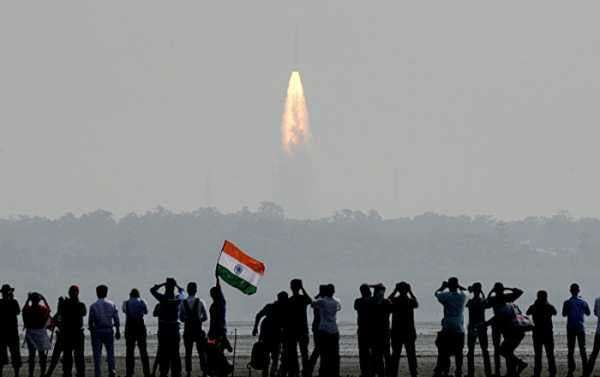
The Hyper-Spectral Imaging Satellite (HySIS) that will be launched on Thursday will be used for a range of applications like agriculture, assessment of coastal zones and surveillance work for the Indian armed forces. The HySIS uses the power of digital imaging and spectroscopy that improves imaging capabilities significantly.
New Delhi (Sputnik): Countdown has begun for the launch of India’s first Hyper-Spectral Imaging Satellite (HySIS) The Indian Space Research Organisation’s Polar Satellite Launch Vehicle (PSLV) will carry the HySIS along with 30 other payloads in the launch scheduled on Thursday from the Satish Dhawan Space Centre (SDSC) SHAR, Sriharikota.
“While the Indian Space Research Organization (ISRO) coyly puts it down as another variety in remote sensing, knowledgeable sources have earlier conceded that it can be highly useful in marking out a suspect object or person and separate it from the background. This could aid in detecting trans-border or other stealthy movements,” The Hindu reported.
The HySIS will be placed in 636-kilometer polar sun-synchronous orbit with an inclination of 97.957 deg.
The satellite can see in 55 spectral or color bands from 630 km above. After the successful development at its space application center, India’s national space agency is venturing into the domain of operational hyperspectral imaging from earth orbit.
“HysIS is an earth observation satellite developed by ISRO. The mission life of the satellite is 5 years. The primary goal of HySIS is to study the earth’s surface in visible, near infrared and shortwave infrared regions of the electromagnetic spectrum,” an ISRO document reads.
The co-passengers of the satellite include 23 micro-satellites from the US while one micro-satellites each from Australia, Canada, Columbia, Finland, Malaysia, Netherlands, and Spain. Colombia’s FACSAT, Finland’s Reaktor Hello World and Malaysia’s InnoSAT-2 are earth observation satellite. Colombia, Malaysia, Australia, and Spain are using Indian rocket first time ever, which also pointed India’s growing reach among the global satellite makers.
Sourse: sputniknews.com






